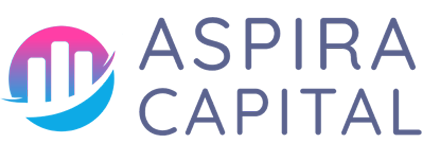Essential Last-Minute Tax Filing Tips as the Deadline Approaches
Table of Contents
- Understanding the Tax Deadline
- Organizing Your Documents
- Choosing the Right Filing Method
- Maximizing Deductions and Credits
- Using Tax Software
- Filling Out the Tax Form
- Common Mistakes to Avoid
- Extending Your Filing Deadline
- Tracking Your Refund
Understanding the Tax Deadline
The Tax Deadline Approaching brings about a sense of urgency for many taxpayers. It’s crucial to understand the importance of this timeline to avoid penalties. Generally, the federal tax deadline is April 15th, but this can vary based on weekends and holidays. Refer to the IRS for specific dates and any changes that might affect your filing.
The Importance of Timely Filing
- Avoiding Penalties: Late filings can result in fees and interest.
- Accessing Refunds: Early filers receive refunds sooner.
- Preventing Stress: Early preparation reduces the anxiety linked to last-minute filing.
Organizing Your Documents
Before anything else, ensure all your tax documents are organized and readily accessible. This can significantly ease the filing process as the Tax Deadline Approaching looms.
Key Documents to Gather
- W-2 forms from your employer(s)
- 1099 forms for freelance or contract work
- Receipts for deductible expenses
- Form 1098 for mortgage interest payments
- Investment income statements
Digital Organizing Tools
Utilizing digital tools can help streamline your organizing process:
- Cloud Storage: Services like Google Drive or Dropbox offer easy access and sharing capabilities.
- Expense Tracking Software: Apps like Mint or Expensify can keep your expenses in check.
Choosing the Right Filing Method
Choosing the correct filing method is pivotal, especially as the Tax Deadline Approaching creates more pressure.
Filing Options Available
- Self-filing: Ideal for straightforward tax situations. You can use forms and instructions available on the IRS website.
- Tax Preparation Software: Programs like TurboTax or H&R Block simplify the process with user-friendly interfaces.
- Hiring a Professional: A tax professional can provide invaluable assistance, especially for complex financial situations.
Maximizing Deductions and Credits
Maximizing deductions and credits can significantly lower your tax liability. The Tax Deadline Approaching should not deter you from exploring all possible avenues.
Common Deductions
- Standard Deduction: Most taxpayers qualify for this deduction.
- Itemized Deductions: Medical expenses, mortgage interest, and state taxes paid could qualify.
- Charitable Contributions: Donations to qualifying charities can be deducted.
Available Tax Credits
- Earned Income Tax Credit (EITC): Useful for lower-income workers.
- Child Tax Credit: Helps taxpayers with dependent children.
- Education Credits: Available for qualified tuition and related expenses.
Using Tax Software
Tax software can be a game-changer during the crunch time of the Tax Deadline Approaching.
Benefits of Tax Software
- Efficiency: Quick calculations and forms completion.
- User-Friendly Interfaces: Intuitive prompts that guide you through each section.
- Error Checking: Built-in checks that minimize mistakes.
Selecting the Right Software
Choosing the right tax software is crucial, and you should consider:
- Cost: Compare pricing options.
- Features: Look for relevant features like audit support, e-filing, and compatibility with state taxes.
Check Consumer Reports for the latest reviews on tax software.
Filling Out the Tax Form
Filling out your tax form accurately is imperative, especially with the Tax Deadline Approaching. Here are some tips to help you manage this process.
Steps to Follow While Filing
- Read Instructions Carefully: Each form comes with detailed instructions that are vital.
- Be Honest: Report all income honestly to avoid audits.
- Double-Check Your Information: Ensure your Social Security number, address, and bank information are correct.
Submitting Your Tax Return
- E-File: The quickest way to submit your return and receive any refunds.
- Mailing Forms: Ensure you get a tracking number and know the postmark date.
Common Mistakes to Avoid
As the Tax Deadline Approaching brings stress, mistakes can easily creep in. Avoid these common errors to ensure a smooth filing process.
Frequent Errors
- Math Miscalculations: Double-check all calculations to avoid penalties.
- Incorrect Filing Status: Choose the right status (single, married, etc.) based on your situation.
- Missing Deadlines: Keep track of all vital dates.
Extending Your Filing Deadline
If you find yourself unable to file by the Tax Deadline Approaching, you might consider applying for an extension.
How to Apply for an Extension
- Form 4868: Complete and submit this form to the IRS.
- Pay Any Due Taxes: An extension does not extend the time to pay taxes owed.
Implications of an Extension
While extending your filing deadline can relieve immediate stress, it’s essential to remember:
- You still must pay any tax owed by the original deadline to avoid penalties.
- Any mistakes made will still result in penalties once the return is filed.
Tracking Your Refund
Once your return is filed, tracking your refund becomes essential as tax time progresses. You can easily monitor the progress with the following methods:
Methods of Tracking Your Refund
- IRS Refund Tracker: Use the IRS’s “Where’s My Refund?” tool online.
- Bank Alerts: Set up notifications with your bank for incoming deposits.
Understanding Refund Timing
The timing of your refund can vary, depending on how you filed your return:
- E-filing: Typically, quicker refunds.
- Paper Filing: Often takes weeks to process.
Proper planning and diligence are essential as the Tax Deadline Approaching can create difficulty for many. Following these tips will help ensure that you stay organized, compliant, and ultimately successful in your tax filing efforts.
